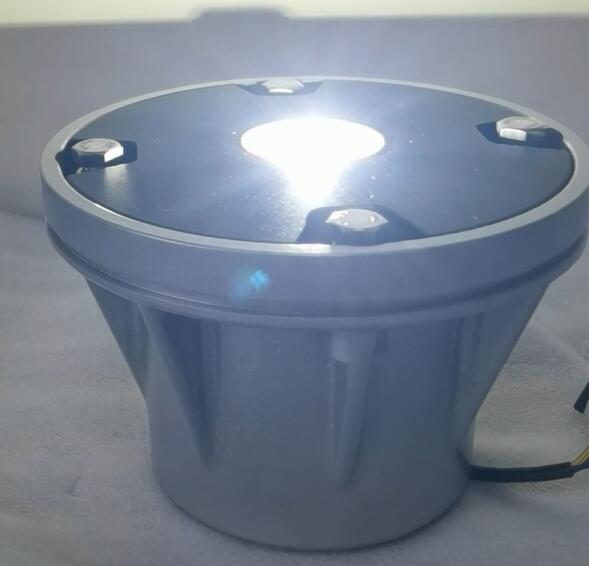Heliport lighting requirements are essential for maintaining safe and efficient operations at heliports, particularly during night flights or in adverse weather conditions. These guidelines, established by aviation authorities like the FAA and ICAO, define the necessary components and standards for heliport lighting systems. Meeting these requirements not only ensures compliance but also enhances pilot safety and operational reliability. This article explores the critical aspects of heliport lighting requirements, offering insights into their importance and implementation.
Why Heliport Lighting Requirements Matter
Proper lighting at heliports is vital for safe landings, takeoffs, and ground movements. It provides pilots with critical visual cues, helping them identify the heliport, assess its condition, and navigate obstacles. Heliport lighting requirements establish a standardized framework to ensure uniformity, clarity, and reliability across various operational scenarios.
Failure to adhere to these requirements can lead to operational disruptions, increased accident risks, and regulatory penalties. Therefore, understanding and implementing heliport lighting requirements is a fundamental responsibility for heliport operators.

Key Components of Heliport Lighting Systems
Heliport lighting requirements specify the use of various lighting components to ensure visibility, safety, and operational efficiency. The main elements include:
1. Perimeter Lights
Perimeter lights outline the heliport’s Final Approach and Takeoff Area (FATO) and Touchdown and Liftoff Area (TLOF). These lights are typically green and spaced at regular intervals, providing pilots with clear boundary markers.
2. Floodlights
Floodlights illuminate the heliport surface, allowing pilots to identify obstacles, markings, and other features of the landing area. These lights are especially crucial for night operations and heliports located in low-light environments.
3. Approach Lighting System (ALS)
The ALS guides pilots during the approach phase by providing visual cues for alignment and descent. These systems often include steady-burning or flashing lights arranged in specific patterns.
4. Obstacle Lighting
Obstacle lights are used to mark hazards near the heliport, such as buildings, trees, or antennas. These lights are usually red and designed to be visible from all angles.
5. Illuminated Windsocks
Windsocks provide pilots with real-time information about wind direction and speed. Heliport lighting requirements mandate their illumination for night operations to ensure visibility.
Regulatory Standards for Heliport Lighting Requirements
The FAA and ICAO outline specific standards for heliport lighting systems. These standards focus on ensuring safety, visibility, and compliance across different types of heliports, including hospital, private, and transport facilities.
1. FAA Standards
The FAA’s heliport lighting requirements are detailed in Advisory Circular AC 150/5390-2C. These guidelines specify lighting arrangements, color coding, intensity, and spacing to ensure uniformity and safety.
2. ICAO Guidelines
The ICAO provides international standards for heliport lighting, emphasizing harmonization across global aviation operations. These guidelines are particularly important for heliports involved in international flights.
Adhering to these standards ensures that heliports remain compliant with regulatory frameworks while supporting safe and efficient operations.
Considerations for Implementing Heliport Lighting Requirements
When designing or upgrading a heliport lighting system, several factors must be considered to ensure compliance and functionality:
1. Environmental Conditions
The surrounding environment, including weather patterns, terrain, and ambient lighting, influences the design and placement of lighting systems.
| Heliport Lighting Requirements |
| Heliport Lighting Requirement |
2. Energy Efficiency
Modern lighting solutions, such as LEDs, provide energy-efficient alternatives that comply with heliport lighting requirements while reducing operational costs.
3. Durability and Maintenance
Heliport lighting systems must withstand harsh weather conditions and require minimal maintenance. High-quality materials and advanced technologies contribute to system longevity.
4. Integration with Navigation Systems
Heliport lighting should integrate seamlessly with air traffic control and onboard navigation systems to enhance operational safety and efficiency.
5. Cost Considerations
While high-quality systems may involve higher initial costs, they offer long-term savings through reduced maintenance and energy consumption.
Technological Advancements in Heliport Lighting
The aviation industry has witnessed significant advancements in heliport lighting technologies, which help meet evolving heliport lighting requirements more effectively:
1. Solar-Powered Lighting
Solar-powered systems offer a sustainable and cost-effective solution for remote or temporary heliports, reducing dependency on traditional power sources.
2. Smart Lighting Systems
Smart systems equipped with sensors and automation can detect approaching aircraft, activating lights only when needed to conserve energy and extend system lifespan.
3. Wireless Control
Wireless systems enable remote management of lighting intensity, patterns, and activation, providing flexibility and ease of use.
4. Enhanced Optics
Anti-glare coatings and advanced optics improve the visibility of heliport lighting under various conditions, such as fog or rain.
Challenges in Meeting Heliport Lighting Requirements
Despite the clear guidelines, meeting heliport lighting requirements can present challenges:
Budget Constraints: The high upfront cost of compliant lighting systems can strain smaller operators.
Urban Limitations: Heliports in urban areas face challenges related to space, light pollution, and visual clutter.
Regulatory Updates: Staying informed about changes in regulations is critical for maintaining compliance.
Heliport lighting requirements are a cornerstone of safe and efficient heliport operations. By understanding the key components, regulatory standards, and technological advancements, operators can implement lighting systems that meet safety standards while enhancing operational reliability. As aviation technology evolves, the future of heliport lighting promises even greater innovation, sustainability, and safety.